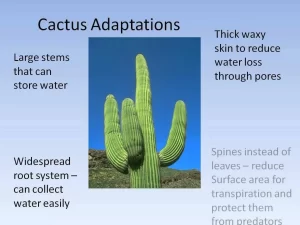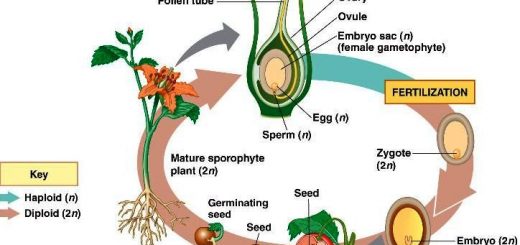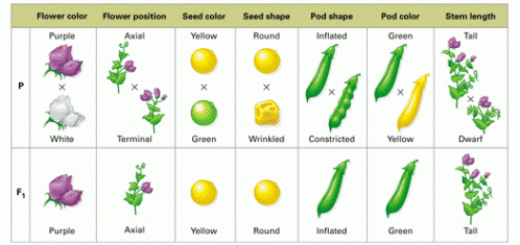Adaptation in desert plants examples, How are Desert plants adapted to their environmental conditions?
Desert plants are generally small-sized as compared to the plants that grow in environments that have water. The desert plants face a shortage of water and rain, strong wind, and an extreme rise in the temperature during the daylight.
Adaptation of the desert plants
The roots of desert plants extend vertically into the soil for great depths to reach the humid layers of the soil (to absorb the groundwater), such as the Calamagrostis plant.
The roots of desert plants spread horizontally to absorb a large amount of the rainwater or dew, and store it in the stems as in the opuntia plant, or succulent (juicy) leaves as in the cactus plant.
The leaves of the desert plants are small-sized, They may be ribbon-like and spiralled, There are a few numbers of stomata that lie deeply to reduce the loss of water by transpiration like the Calamagrostis plant.
The leaves of the desert plants are used in storing the water as in the cactus, The leaves of the desert plants are surrounded by a waxy layer to prevent water loss by transpiration as in the cactus.
The leaves of the desert plants are modified (reduced) into the spines to reduce the loss of water during the transpiration process as in the opuntia plant.
The stems of the desert plants are short to avoid the strong winds as in the cactus plant. They may be rich in the chloroplasts to perform the photosynthesis process as in the opuntia plant.
The roots of the Calamagrostis plant are branched and extended vertically deep in the soil to absorb the groundwater to overcome the water shortage.
Adaptation in desert plants examples
There are many adaptations that desert plants have developed to survive in their harsh environment. By conserving water, reducing sun exposure, and taking advantage of the cooler night hours, these plants can thrive in one of the most challenging habitats on Earth.
Water storage: Many desert plants are succulents, which means they have thick, fleshy leaves or stems that store water. Cacti are the most famous example of this, but other succulents include aloe vera, jade plants, and sedums.
Reduced Surface Area: Desert plants often have small leaves or spines to reduce the amount of surface area exposed to the sun. This helps to minimize water loss through transpiration, the process by which plants release water vapor into the atmosphere. Some plants, like cacti, have modified leaves that are spines. Others, like creosote bush, have small, waxy leaves that help to trap moisture.
Deep Root Systems: Many desert plants have deep taproots that can reach down to groundwater reserves far below the surface. This allows them to access water even during long droughts. Other desert plants have shallow, spreading root systems that can quickly absorb any rainwater that falls. Mesquite trees, for example, can have roots that extend hundreds of feet into the ground.
Night blooming: Some desert plants, such as cacti, bloom at night. This helps them to avoid the heat of the day and to attract night-pollinating animals, such as bats and moths.
Waxy Coatings: Many desert plants have a waxy coating on their leaves or stems. This helps to reduce water loss by preventing evaporation. The waxy coating can also help to reflect sunlight, keeping the plant cooler.
CAM Photosynthesis: Many desert plants use a special type of photosynthesis called crassulacean acid metabolism (CAM), This allows them to take in carbon dioxide at night when the stomata (pores) in their leaves are closed and there is less water loss. The carbon dioxide is then stored as a molecule and used for photosynthesis during the day.
You can download Science online application on Google Play from this link: Science online Apps on Google Play
Adaptation in insectivorous & birds, Hibernation, Aestivation, Birds migration and Camouflage
Adaptation reasons, types, diversity of living organisms and motion in mammals
Transportation in plant, Structure and role of the plant stem in the process of transportation
Autotrophic Nutrition in green plants, Mechanism of water and minerals absorption




